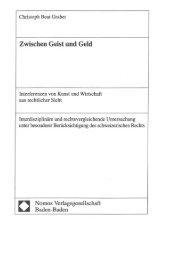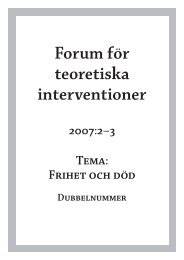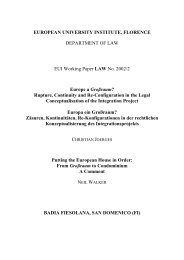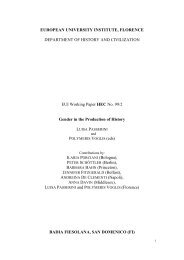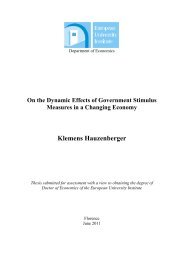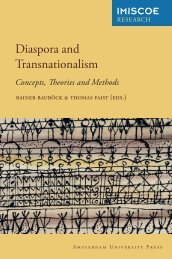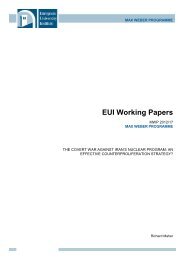Sinziana-Elena Poiana Ioana Lupea Irina-Madalina Doroftei Alina ...
Sinziana-Elena Poiana Ioana Lupea Irina-Madalina Doroftei Alina ...
Sinziana-Elena Poiana Ioana Lupea Irina-Madalina Doroftei Alina ...
Create successful ePaper yourself
Turn your PDF publications into a flip-book with our unique Google optimized e-Paper software.
Since DAHR became a member of the governing coalition (1996), incentives for a consociative<br />
formula increased and most of DAHR's MP and establishment became 'moderate'. The attempts to<br />
discuss DAHR’s leadership in critical terms and ask for a change in its policy failed as most of the<br />
Hungarian political establishment boycotted them. However, the Hungarian nationalists were<br />
influential enough back in 1996 to have the Personal Autonomy Statute approved. Despite the general<br />
radical tone of the Statute, the project for minorities’ law drafted by the Department of Minorities in<br />
the summer of 1998 rested more upon a consociative logic, securing positions for minorities inside<br />
government offices. On the other hand, the official position expressed by the president of the DAHR<br />
was that the autonomy program was not abandoned, its participation in the government being seen as a<br />
gradual approach towards it (Romanian daily Romania libera, 6/02/97). Along the years an approach<br />
trying to balance between the two wings of the party seemed the best policy to keep the party united<br />
around its current leaders. Despite scandals and temporary setback of symbolic issues, most of the<br />
Hungarians’ claims from 1996 were resolved via participation in government. Local government<br />
appointees were now Hungarian; the Hungarian language could be used in justice and administration;<br />
local communities were better financed. All these positive developments were possible only by<br />
amending general laws such as education and Local Administration law, and by passing new laws<br />
(such as Financing of Local Governments). The mere idea of having a Hungarian prefect in Hungarian<br />
majority areas was viewed as heresy in 1996, so important steps forward were possible through<br />
consociationism.<br />
It is difficult to speculate who had the majority inside DAHR at the time, nationalists or moderates.<br />
Votes’ results in 1998 on whether to continue in the governing coalition 6 showed the moderate trend<br />
grew since 1996. Despite some differences, agreement was reached on one thing - the entire<br />
Hungarian political class in Romania wished that Romania would give up seeing itself s a nation-state,<br />
and consequently remove this expression from the 1991 Constitution. The DAHR leader of Tirgu<br />
Mures, Attila Szondi, explained:<br />
The Romanians have to give up the phrase from the Constitution saying Romania is a nationstate.<br />
We’re more than 2 millions, the Gypsies are 2-3 millions, what kind of nation-state has<br />
more than 30 % minorities?<br />
The 2002 census recorded approximately 1.5 million Hungarians and around 550.000 Roma (although<br />
other estimations suggest 1 000. 000 may be closer to truth), relatively close to the numbers in the<br />
1991 census. Despite this fact, fantastic exaggerations like this one are necessary in order to make the<br />
point. The nationalist argument for self-government relies on the numbers when stating we cannot<br />
treat Hungarians as a minority, but as a nation. The Romanian political system is however a<br />
democratic one. Allowing Hungarian representation in Parliament and bringing them in a close<br />
alliance with Romanian parties was worth, since at all times, when DAHR was dominated by<br />
nationalists as since it was dominated by moderates the national problem remained in the framework<br />
of the law. Only once in ten years did DAHR asked for civil disobedience, when requesting parents to<br />
boycott schools to protest against the 1995 Education Law. It was the opportunity for them to measure<br />
the ethnic mobilization. Passive mobilization had been a success: 400000 Hungarians signed for<br />
modifications to be made in the Education law. However, very few followed the appeal to civil<br />
disobedience. The Law allowed for teaching in maternal language and more recently it has been<br />
amended to allow for curriculum development specific to minority education. The implementation of<br />
the legal provisions is still far from perfect. While the privatization of manuals’ development and<br />
distribution was supposed to lead to supply diversification, after a few trials, it turned out to be more<br />
profitable for editorial houses not to print manuals in minority languages. Thus, for schools that chose<br />
to teach in Hungarian, structuring the curriculum depended on the availability of imported teaching<br />
materials. Most of the times, this means access only to Mathematics and Hungarian Language manuals<br />
for primary school children.<br />
6 The nationalist wing of the leadership was pushing for a more radical approach to party policy, which has led to a vote on<br />
whether the party should withdraw from the governing coalition in 1998.<br />
17



